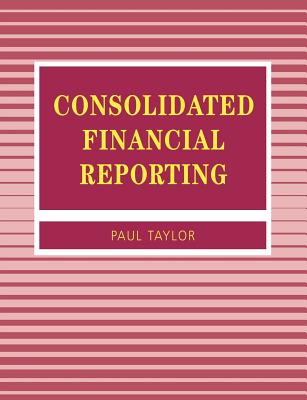Consolidated Financial Reporting introduces and examines what is currently the most central and controversial area in financial reporting.
Consolidated Financial Reporting introduces and examines what is currently the most central and controversial area in financial reporting. In an innovative and distinctive way the author integrates concepts, techniques, controversies and current practice. Techniques are introduced within a framework which shows why they work and what the figures mean. Controversial issues are grounded within modern accounting theory and practice.
All core areas and relevant standards are covered including: acquisition and merger accounting; fair values at acquisition; goodwill; consolidated cash flow statements; reporting consolidated financial performance; foreign currency translation; segmental reporting; off-balance sheet financing; and related party transactions.
The book is designed so that readers with particular interests - for example in technical matters or concepts and standards - can easily find their way through clearly marked sections. Discussion and calculation reinforce each other - calculations illustrate controversies, and controversies and concepts illustrate techniques. Examples are carefully graduated and care is taken not to obscure principles with unnecessarily complex calculations. Materials are set into an international context.
The book is both rigorous and accessible. It is an extensive revision of and successor to the author′s 1987 title Consolidated Financial Statements. Because of recent theoretical and institutional developments, an enormous amount of new material has been added and new teaching approaches to many areas included. There are many more worked examples and exercises as well as approachable discussions of ′state-of-the-art′ advanced topics.
The solutions notes for each case are avilable on a disk for instructors who recommend the book for course use.
Get Consolidated Financial Reporting by at the best price and quality guranteed only at Werezi Africa largest book ecommerce store. The book was published by Sage Publications Ltd and it has pages. Enjoy Shopping Best Offers & Deals on books Online from Werezi - Receive at your doorstep - Fast Delivery - Secure mode of Payment
 Jacket, Women
Jacket, Women
 Woolend Jacket
Woolend Jacket
 Western denim
Western denim
 Mini Dresss
Mini Dresss
 Jacket, Women
Jacket, Women
 Woolend Jacket
Woolend Jacket
 Western denim
Western denim
 Mini Dresss
Mini Dresss
 Jacket, Women
Jacket, Women
 Woolend Jacket
Woolend Jacket
 Western denim
Western denim
 Mini Dresss
Mini Dresss
 Jacket, Women
Jacket, Women
 Woolend Jacket
Woolend Jacket
 Western denim
Western denim
 Mini Dresss
Mini Dresss
 Jacket, Women
Jacket, Women
 Woolend Jacket
Woolend Jacket
 Western denim
Western denim
 Mini Dresss
Mini Dresss






























































